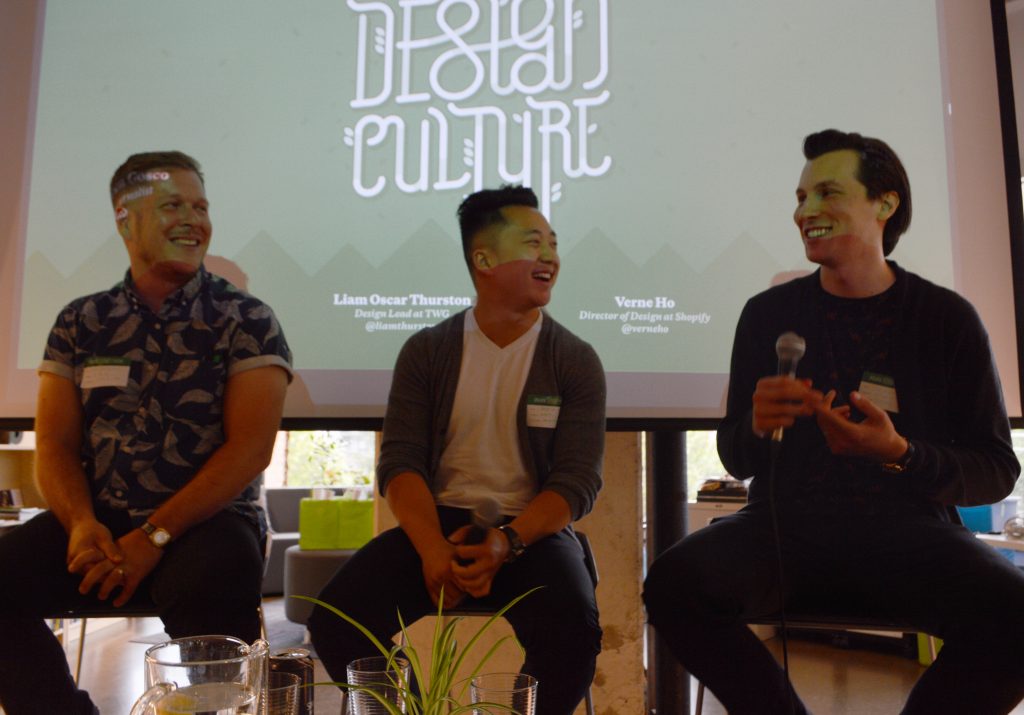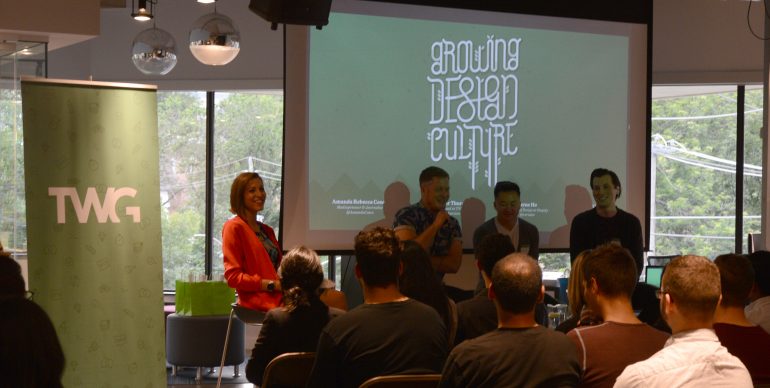A user-focused, attractive design for a product isn’t easy to create, and the pressure to come up with the next hot software can be nerve-wracking to deal with.
On Thursday, three design pros from leading tech companies — Liam Oscar Thurston, design lead at The Working Group, Verne Ho, director of design at Shopify, and Billy Kiely, VP of product at InVision — came together at The Working Group office for Growing Design Culture, a networking event focused on designers looking for the secret sauce to making great products. The panel was moderated by BetaKit’s own Amanda Cosco.
“There’s something really beautiful about creative chaos and being a small and scrappy team. So take advantage of that.”
– Verne Ho, Shopify
Ho took the point of view that there were benefits to having a small team more open to experimentation and less susceptible to putting themselves in a box. “You don’t have to over-engineer a lot of stuff. I think it’s important to be aware of the size of your team, the context that you’re in and what you want to achieve before you really start over-standardizing the process,” Ho said. “There’s something really beautiful about creative chaos and being a small and scrappy team. So take advantage of that.”
Though the ‘creative chaos’ method can get you places, Thurston suggested that studying the successes of other products, and figuring out what consistently works in the market, is something that product designers should lean on in some aspects. “As a product designer, you want to add personality, and some abilities and solutions that people will use to improve their lives, but you don’t want to freak them out,” Thurston said. “You don’t want to break paradigms that are there for a reason and work. Don’t be afraid to lean on success out there and be inspired and grow from there.”

Often, the conversation around product design tends to be user-focused, but the panelists stressed that having an entire team on board with the product and the vision is just as important to the product’s success. “Being design or user-first is also about mentoring other people in the team, and having the development team think like a designer and think from the perspective of the user,” said Kiely. “Since our customer base is primarily designers, everybody in the company is dealing with designers.”
As Cosco took questions from the audience, many wondered about working in an industry where some clients are still surprised by the seemingly long timelines set by designers for projects. “Design is a competitive advantage,” said Ho. “We need to do our part in educating the industry on what design actually means and the full value of it.” Ho said it’s tough for clients to look at a three-month contract and see the value of the work right away, and told the audience it’s important to constantly articulate the value of designing.
No matter what route you take in growing as a design team, it’s crucial to ensure that you don’t get too attached to the belief that your design is the best possible version of the product – a struggle many designers deal with. “One part of where we’re trying to grow to is to remove subjectivity out of process and become an entirely results-driven design team,” Thurston said. “If the design we’re creating doesn’t achieve the results at testing, launch, whatever, then ego shouldn’t be part of the conversation. As we mature as designers, that becomes easier.”
Images courtesy Jasmine Pazzano.

